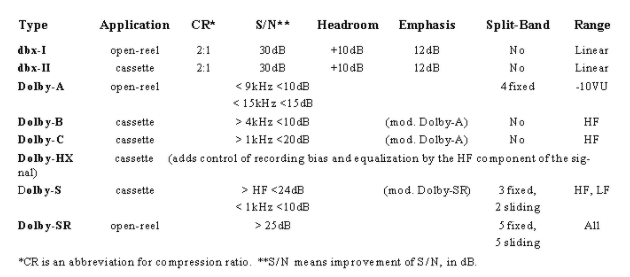Two technologies for noise reduction have become standard in the consumer and professional recording industry: dbx and Dolby. All two-ended noise reduction systems are a type of compander, i.e., they operate by encoding the signal at the record end, and decoding the signal, restoring the dynamic range and frequency spectrum, upon playback.

Single-ended noise reduction systems need no encoding or decoding. The NR is applied to noisy instruments or microphones and works either by dynamic filtering or downward expan-sion. Dynamic filtering works will with noisy synthesizer sounds, but can cause pumping and breathing. A downward expander attenuates any signal below the threshold. It works when applied to cut the buzz on a noisy guitar amplifier, but it can also cut off quiet signals like reverb tails if the threshold is set too high.